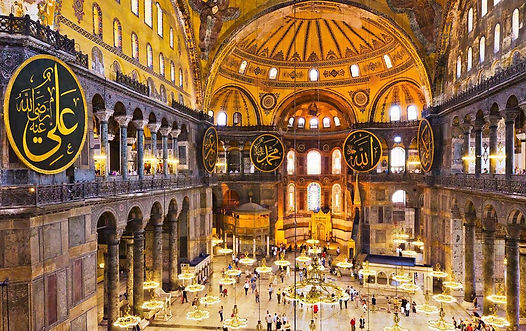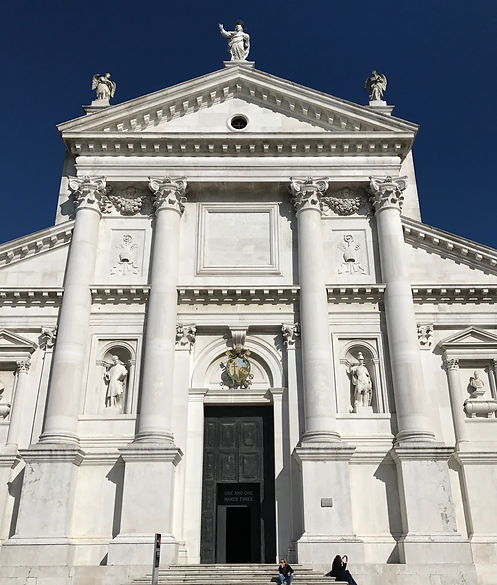
2.
destiny of the column: *
THE COLUMN THROUGH 4 CULTURES
Egyptian- "ranked to mark the path of the traveller"
The famous Hypostyle Hall Karnak, Temple of Amun-Re, is vast covering an area of 5,000 square meters. The roof was supported by 134 columns in 16 rows. Most of these columns are 10 meters in height, the 12 columns in the middle rows are higher than the others (at 21 meters). These large columns mark the east-west axis of the Hypostyle Hall. It is along this this east-west axis that a visitor would walk, in effect the path thru the temple.
the smaller columns view of Hall showing pathway the larger columns
Classic- “held together by the body of the building”
The Peripteros is a type of ancient Greek temple surrounded by a portico with columns. Such temples were surrounded outside by a colonnade (pteron) on all four sides of the cella creating a 4-sided arcade (peristasis). The Peristasis or hall of columns surrounding the cella allowed priests to pass round the cella (along the colonnade) in cultic processions. Commonly used in reference to Doric temples.
The Temple of Zeus at Olympia, Second Temple of Hera, Paestum,
built 2nd quarter 5th century BC, closely modelled on the Olympian Temple of Zeus
considered the model of the Doric temple.





Early Arabian (Magian)- “support the interior”
Spengler’s term “Early Arabian” is deceptive as he is not referencing Arabia in its traditional sense (Islam or pre-Islamic cultures) but rather Byzantine- Late Classical- Early Christian (circa 0 to 500 AD).
below Hagia Sophia basilica, Greek Byzantine Christian, constructed between 532-37 AD on the orders of the Byzantine Emperor Justinian I, named Church of the Holy Wisdom.
reconstruction of interior (as mosque) view of central nave with dome & columns


Faustian (Western)- “provide the upward-striving element”
below San Giorgio Maggiore, 16th-century Benedictine basilica, Venice, designed by Palladio, 1566-1610, in classical Renaissance style; the façade, brilliantl white, illustrates Palladio's solution to adapting a classical temple facade with a Christian church which has a high nave & low side aisles. He employs 2 facades, one with a wide pediment & architrave, extending over the nave & both aisles, supported by a single order of pilasters; the other with a narrower pediment (the width of the nave) superimposed on top of it with a giant order of engaged columns on high pedestals.

3.
Tolstoi: *
The quote is from Tolstoy’s novel "Childhood” (1852), first of a trilogy of novels, the other 2 being Boyhood (1854), and Youth (1857). The full quote is:
“From a five-year-old child to my present self is only a step; from a new-born infant to a five-year-old child the distance is enormous; from an embryo to a newborn it is immeasurable; but between non-existence and the embryonic state the distance is not only immeasurable but also inconceivable."